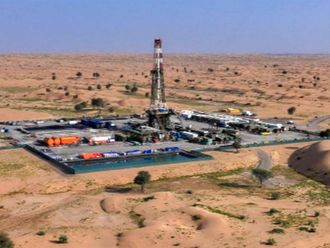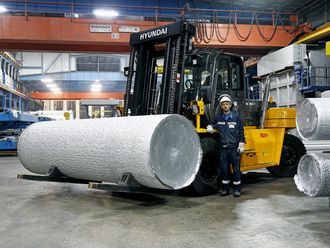The world's largest offshore oil rig stopped sinking three days after massive blasts rocked the structure, killing 10, but bad weather could hamper efforts to recover the bodies and salvage the platform, the Brazilian owners said yesterday. The steeply listing 40-story platform was stable after sinking more than 13 feet (four meters) since explosions ripped through a column early on Thursday, Brazil's state oil giant Petrobras said.
"We are not out of danger and the situation continues to be critical but we are more optimistic now that it is stable," said Carlos Eduardo Bellot, general manager of Petrobras operations in the oil-rich Campos Basin. "It was a great feat to be able to stop the sinking," he said.
Petrobras this weekend flew in U.S. and Dutch experts and 50 tonnes of European equipment to keep the deep-sea platform afloat and prevent an oil spill. Three blasts rocked the rig, killing 10 of the 175 men aboard and seriously injuring another. Petrobras said on Saturday it had given up hope that nine missing workers from the rig's fire brigade had survived, and counted them among the dead.
Petrobras, the biggest company in Brazil, was still trying to determine the cause of the explosions, which local media attributed to a natural gas leak. Close to 350 engineers, divers and navy men started to right the platform on Sunday, though the weather began getting worse as a cold front moved up the southern Atlantic seaboard to the northern coast of Rio de Janeiro state.
"The weather does not stop the work, but it could make conditions more difficult for the divers," Bellot said. Waves yesterday were 1.5 metres high and could rise to 1.7 metres with worse weather expected today.
The P-36 rig, which cost $350 million and is insured for $500 million, is located 125 kilometres off Macae, the gateway to the Campos Basin. A team of 40, including 11 Dutch platform-rescue specialists, was injecting nitrogen gas into tanks located inside the damaged column to expel water and gradually right the platform. It was leaning at an angle of 23 degrees, two degrees less than at the worst point. The divers were drilling holes in the column and tanks at around 160 feet (50 meters) below the surface.
Workers tired easily working on the incline and teams were rotated quickly, said Carlos Tadeo Fraga, Petrobras chief of exploration and production in the south and southeast regions.Though Petrobras President Henri Philippe Reichstul said the recovery of the bodies was the main priority, officials said it was currently impossible to access the chambers where the bodies were trapped.
Only one severely burned body has been recovered and identified as a 34-year-old father.If the rig were to sink, up to 395,000 gallons (1.5 million liters) of crude and diesel in underwater pipelines and onboard tanks could be dumped into the ocean. Petrobras said it did not expect the 21 well heads to break, which would have led to a much more serious environmental disaster.
After two major oil spills and a series of episodes in which 81 workers died in the last three years, the accident was a fresh blow to Petrobras, which has been trying to establish itself as one of the world's leading oil companies. The firm is already considered a global expert on deepwater production and the P-36 rig inaugurated last year was supposed to be the prime example of its advanced technology.
Bad weather complicates Brazil oil rig rescue
The world's largest offshore oil rig stopped sinking three days after massive blasts rocked the structure, killing 10, but bad weather could hamper efforts to recover the bodies and salvage the platform, the Brazilian owners said yesterday.












